Arcade Beat ‘Em Ups of the Early 1990’s
Back in the 8 bit and 16 bit era, we had some great games to play at home, but unless your parents were rich enough to buy you a Neo-Geo for Christmas, you had to go to the arcades if you wanted to get that cutting edge, next level experience. This was true at the dawn of the 1980’s just as much as it was in the early to mid 1990’s. The action wasn’t just limited to arcades, either. These machines were everywhere; you could find them at gas stations, shopping malls, laundromats, movie theaters, Pizza Hut, even shoe stores. The action wasn’t expensive, most plays only cost a quarter, and it encouraged social interaction. Think back to the arcade scene in Terminator 2: Judgement Day; that was our collective arcade experience, minus the killer robots trying to assassinate people.
“Have you seen this boy?”
I had a lot of games to choose from, but this time we’re going to take a look at some of the beat ’em up games from the early 1990’s. Following the success of games like Double Dragon and Streets of Rage, the fighting genre exploded. It was red-hot, in arcades and later, home consoles. The fighting genre can be divided into two subcategories: tournament and side scrolling. Tournament style involved taking on all the characters in the game’s roster, with one or two players for the most part, and side scrolling was more of a ‘fight everyone in the neighborhood’ style, that supported up to six players, in some cases. Developers Capcom and Konami led the way for the early 90’s fighting boom, with Midway becoming a key player soon after. The fighting craze breathed new life into the landscape of gaming, and was responsible for yet even more sales with home console ports and knockoff games. The games we look at today are by no means the ‘essential’ arcade beat ’em ups, but ones that reflect my experience as a gamer, and yes, as a kid.
Street Fighter II (1991, Capcom)
Regarded by many as the quintessential arcade fighting experience, Street Fighter II hit arcades in 1991, to much fanfare and well deserved hype. You took control of one of 8 fighters, all with a unique back story and fighting style. The game pitted your selected fighter in a tournament involving all the others, as well as 4 non-selectable characters later in the game. The matches were a best 2 out of 3 style, taking place in various locales around the world, with the final showdown taking place in Thailand, versus the evil M. Bison. Street Fighter II was massively successful, spawning numerous sequels, crossover games, animated cartoons, action figures, and one of the worst movies of all time. To this day, the franchise remains a video game powerhouse.
My first look at Street Fighter II took place at a ski lodge in North Carolina during a church ski trip. After realizing that snow skiing was not an activity that this Southern boy was adept at, I located the arcade at the lodge and spent most of the rest of the trip there. I dropped some quarters into the usual suspects like Bad Dudes, Outrun! and WWF Wrestlefest, but after a little while I noticed a small crowd at an arcade machine on the other side of the room. I made my way over after my current game ended and came upon a couple older teenage boys talking mad trash at each other, in a heated competition of some game I had never heard of. That game was none other than Street Fighter II. I was amazed at the colorful graphics and lightning fast animation, and even the concept of the game itself was mesmerizing. I had no idea there was even a Street Fighter 1, let alone a Street Fighter II. Suddenly there was a new genre for me to sink my teeth (and quarters) into. When the other kids were finished, I stepped up to play for the first time, I think I used Blanka for my first fight. After the computer kicked my ass, I headed over to the change machine and promptly spent ten dollars getting a feel for the game over the next several hours. When the SNES port arrived later, I was even able to get good at the game, since I wasn’t having to spend money to play. Truly a classic that is still just as fresh today as it was then.
Teenage Mutant Ninja Turtles (1989, Konami)
Back in the late 80’s, Teenage Mutant Ninja Turtles were shit-hot in America. There were cartoons, action figures, live action movies, t-shirts, lunchboxes, a crappy NES game, and just about any other type of merchandise you could slap a turtle on. Then Konami released an arcade title featuring the boys in green. What made this side scroller so special, besides the amazing graphics and near perfect gameplay was the 4 player co-op. I have always been a fan of teamwork, and the fact that you could play with 3 friends or strangers really made for a great experience. One guy could get bored and take off, leaving you with one or two other players, but then a random kid could show up and drop a quarter and join in the action. The story was your typical TMNT fare; April O’Neal kidnapped by the Shredder and his cronies, and since the police are usually powerless in such situations, it was up to the Turtles to save the day. The game was so well received that Konami utilized the game’s engine for future releases, another of which will be discussed here later.
My TMNT story takes place at a popular children’s pizza parlor/arcade called Chuck E Cheese’s, at my cousin Stephen’s birthday party. I was a little too old to enjoy the creepy animatronic hillbilly bear concert and the pool full of plastic balls that young children are bad about vomiting and defecating in, so after filling up on sub par pizza I took my pocket full of tokens over to the arcade section, where I saw the Ninja Turtles arcade game for the first time. There were three other kids already playing the first level, so I jumped in as Raphael since he was always the crappiest turtle to use in any TMNT game. As soon as the kid playing Leonardo was dragged away by his mom, I left Raph to die and moved over to Leo. I had somewhere in the neighborhood of five dollars worth of tokens, and players 2-4 came and went, but we ended up beating the game. This was awesome; because I had never beaten an arcade game before, and the cooperation and camaraderie between me and a bunch of kids I had never met made for a truly memorable arcade experience.
Final Fight (1989, Capcom)
In many ways a forerunner to Street Fighter II, (The game’s working title was ‘Street Fighter ’89) Final Fight was a side scrolling beat ’em up that was more or less Double Dragon on steroids. Supporting one or two player co-op, you chose between Cody, Guy or Haggar, attempting to rescue Jessica from the Mad Gear gang. Jessica was Cody’s girlfriend as well as the daughter of Haggar, the newly elected mayor of Metro City, who also happened to be a former professional wrestler. In a way, this game can be credited as predicting Jessie “The Body” Ventura’s rise to the governership of Minnesota much later. Guy, who is Cody’s best friend and proverbial third wheel in their relationship lends a hand to rescue the damsel in distress. Now, we all have had the friend who is totally in love with this girl who gets kidnapped, and often found ourselves joining our buddy in a quest to beat the hell out of anybody remotely involved, right? Ah, that’s what friends are for.
This game was always my go-to game if Mortal Kombat or Street Fighter II were swamped with other players. It wasn’t a bad game at all, but by the time this one turned up at the Southlake Mall’s arcade, called “The Tilt,” The tournament fighting genre was in full swing. Still, the game was very well made, offering six levels of action, as you used a combination of punches, kicks, throws and melee weapons to kill everybody involved in Jessica’s kidnapping. Final Fight was not short on controversy either; some power ups you picked up to regain health along the was consisted of beer & hard liquor, and there were two characters, named Poison and Roxy, who didn’t make it to the home console port. At first glance, these girls were nothing more than tough chicks who loved to fight. In all reality, they were a couple of transvestites with mean streaks. For the SNES port, they were replaced with a pair of generic cyberpunk characters. All told, Final Fight offered a simple, straight forward concept that was very well executed, spawning multiple sequels and ports.
The Simpsons: The Arcade Game (1992, Konami)
In 1989, Konami hit paydirt with the TMNT Arcade game, and in 1992, they acquired an equally, if not more, red-hot property for a game with the Simpsons. The story involved Mr. Burns’ assistant and suspected “Life Companion,” Waylon Smithers abducting Maggie during the course of a jewelry store robbery. Again, instead of calling the police, the Simpsons clan sets out to save their baby. The game ran on the same engine as the TMNT game, with up to 4 players co-op, however it also featured a unique feature that enabled players to combine together for a joint attack, for example, Homer could grab Bart and use him like a melee weapon. The graphics were most definitely Simsponesque, and how could they not be? Also, much like the TMNT game, the 4 player co-op only added to the game’s appeal. Why this game was never ported to the SNES or Sega Genesis is a mystery to me.
This was another game that I played often at the Southlake Mall’s arcade; this one arrived a little later in my time at the Tilt. The neighborhood that the mall was situated in (a rapidly decaying Atlanta suburb) was becoming more and more like a demilitarized zone, and my love for arcade gaming took a back seat to my personal safety. I did not like the idea of being stabbed over my Starter hat or Nike shoes. But what little time I had with the Simpsons game was great fun. This was well before the Simpsons franchise took its downward turn, and the characters were still very fresh. The game is now available as a download on Xbox Live Arcade, which I can enjoy from the comfort of my own couch, without fear of being assaulted by Clayton County thugs.
Mortal Kombat (1992, Midway)
Upon its release, Mortal Kombat was one of the most controversial games of the 1990’s. Taking the concept of Street Fighter II, this tournament fighter upped the ante with an inordinate amount of gore. The blood flowed like wine, for sure, but it was the darker elements of the overall concept that gave this series a life of its own. In addition to the bloody game play, you had the option of performing a “Fatality” move on your helpless opponent, which included ripping out your opponent’s heart, setting them on fire, tearing off their head and spinal column, etc. This was awesome; however it also was single-handedly responsible for the establishment of the Entertainment Software Ratings Board (ESRB), that we all know and love today. The plot revolves around mystical warrior Shang Tsung’s fighting tournament that takes place on Earth. Warriors from around the world respond to Tsung’s call in order to determine who is the greatest fighter or some shit like that. If I remember correctly, there was also some other-worldly element to the plot as well. Mortal Kombat also featured stages with which the combatants could interact with the environment to kill their opponents, such as the spike pit.
The first time I ever heard about Mortal Kombat was back in 8th grade. The principal’s goody-goody son at my school was telling us all about this crazy game he played that was like Street Fighter, but you killed the other player at the end of the fight. I was doubtful to the accuracy of this kid’s story, mostly because violence such as what he was describing was more or less unheard of at this point in time. His account was verified the following weekend, when I was at Best Buy with my parents. The store had a MK arcade cabinet near the cash registers, and there was a crowd of Asian kids at the machine playing the game. This in and of itself wasn’t anything out of the ordinary in Clayton County at the time, but what I noticed was that the kids playing had their hats covering their joystick hands. This puzzled me as I was quickly beaten multiple times, later I surmised with my friends at school that the reason for this practice was to keep everyone else from figuring out the movesets, giving them an edge in competition. MK was also ported to the SNES and Sega Genesis, (one with blood, and one without), spawning dozens of sequels over the years. One of the fun things about MK was the rampant rumor mill that abounded by word of mouth, in magazines, and an early form of the Internet. Ermac, anyone?
Time Killers (1992, Strata)
I was going to close out this article with the X-Men Arcade Game, another Konami arcade offering from 1992 utilizing the same engine as TMNT and the Simpsons, but then I remembered Time Killers. Time Killers was a 2 player tournament fighting game released hot on the heels of Mortal Kombat. What made Time Killers special was the fact that it offered innovation in a relatively new genre: weapons based combat. Yes that’s right, take the not-anywhere-near-as-good Street Fighter II style graphics, Mortal Kombat style blood and gore, add chainsaws and axes and you have Time Killers. The plot revolves around the Grim Reaper, known in-game as “Death” has pulled a variety of warriors from their respective time periods and forced them to face off in a vicious tournament, facing him at the end in a quest for immortality.
The characters range from the past, such as Cavemen, Viking Berzerkers, and Samurai, to the future, including a Cyberpunk that was seemingly taken straight out of Final Fight, to a Space Marine, and even a mutated preying mantis of some type. The characters are all unique to their time, but where Time Killers really separated itself from the pack was the fact that you weren’t so much as concentrating on draining your opponent’s life bar as you were with dismembering your enemies. Your attacks focused on different areas of the body; you could hack off not one but both of your opponent’s arms, leaving them with only kicks and headbutts to defend themselves with. What I found funny was after cutting off someone’s arm, it would fall twitching to the ground, spurting blood everywhere. You also could use a “Death Move” which would decapitate your enemy and win the round, and even a “Super Death Move” which would remove both arms and your opponent’s head.
Time Killers never spawned a sequel, and many years later was ported to the Sega Genesis, but was met with very poor reviews as well as a limited release. However, it is important to credit Time Killers for its contribution to the genre with its limb-specific attacks, which would later be seen in Tekken, as well as introducing weapons based combat. We would see many great games later, such as the Soul Calibur series, as well as one of my favorite games from the Bushido Blade series, which I firmly believe needs a sequel. I don’t have many memories of Time Killers, in fact, I only remember playing it once, at a movie theater arcade. I played a couple of rounds, and my mom walked up behind me to see what I was playing. It took maybe fifteen seconds before she yanked me away from ‘that filthy ass game that I had no business playing,’ to paraphrase what she said. Still, that one time playing it made enough of an impression to make me include it in an article I am writing more twenty years later.
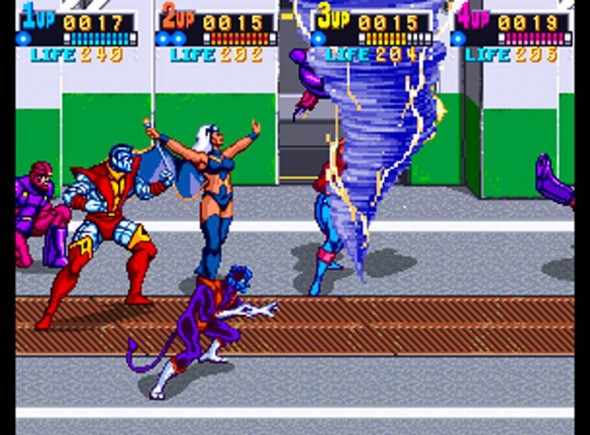 The Uncanny X-men (1992, Konami)
The Uncanny X-men (1992, Konami)
In our day and age of killer games on powerful consoles, we are indeed fortunate to have the quality of games currently on the market available for play in our own homes. This is good for the industry, and convenient for us as gamers, but however the passing of the arcade does make me sad. Mainly because it’s a part of our youth that we will never have again, and also the social element is lost; it just isn’t the same taunting a foul mouthed 9-year-old as we kill him for the umpteenth time in Halo. Alas, such is life.
Arcade Beat 'Em Ups of the Early 1990's,

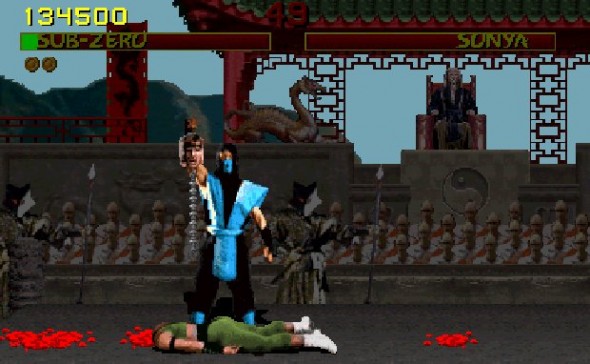
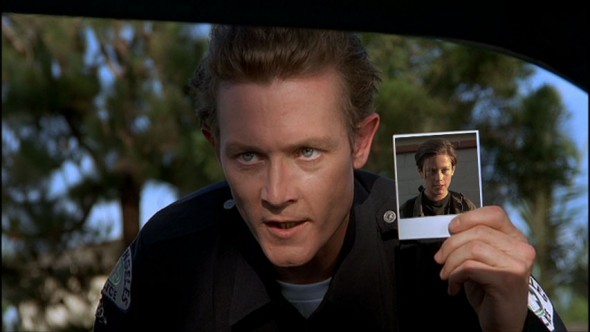
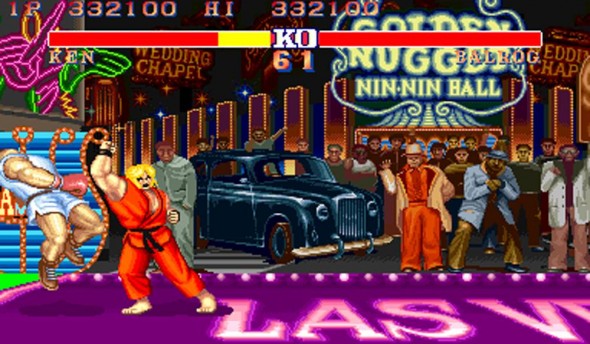
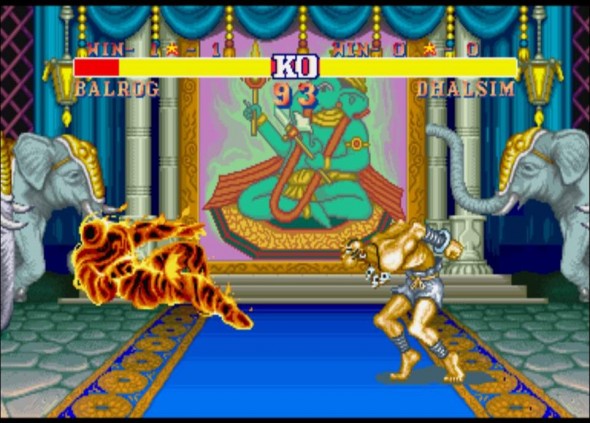
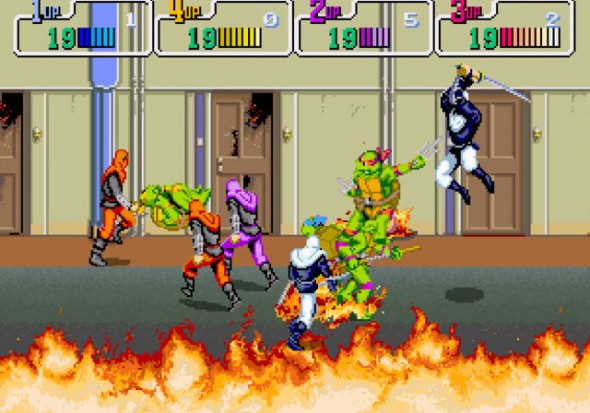
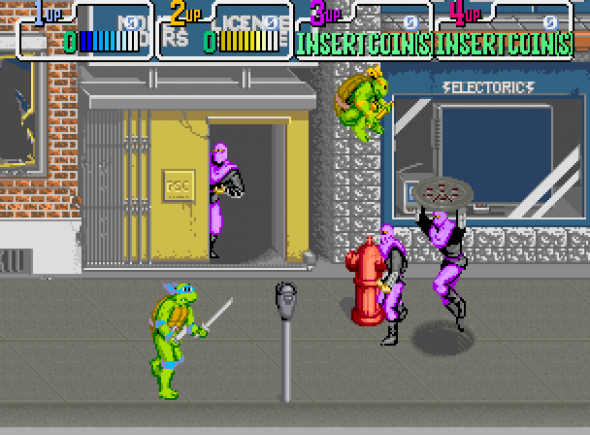
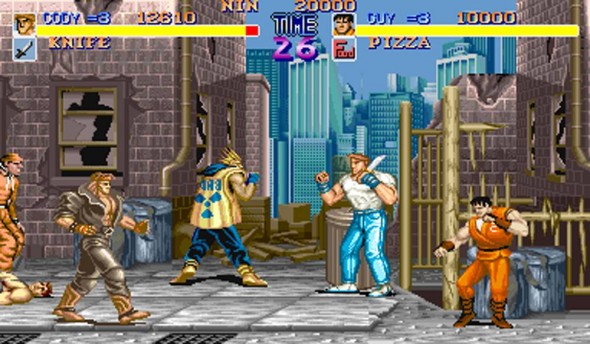
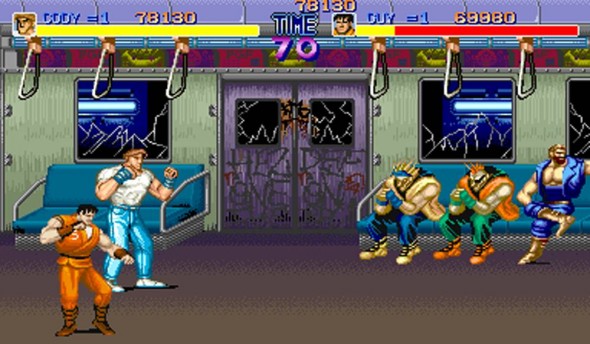
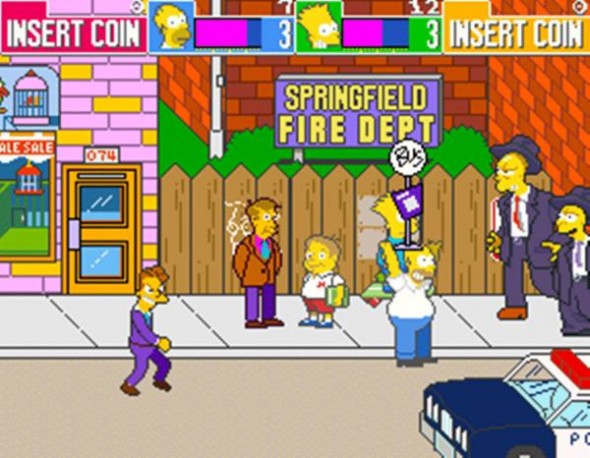
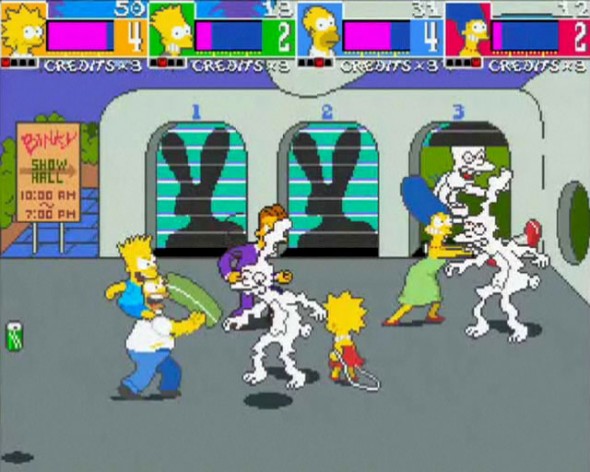
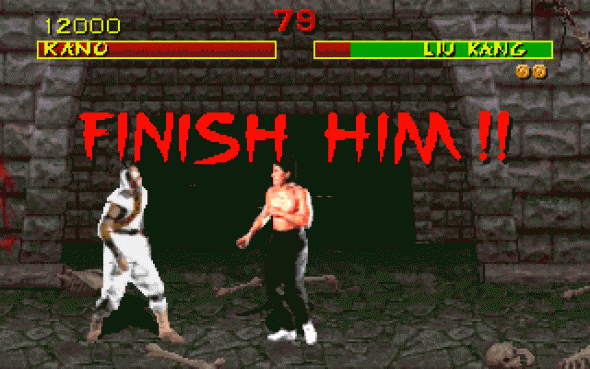
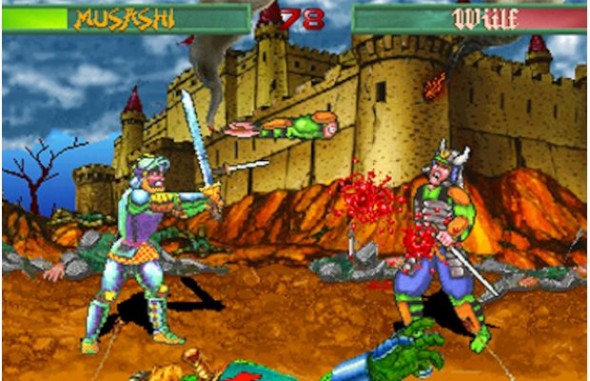
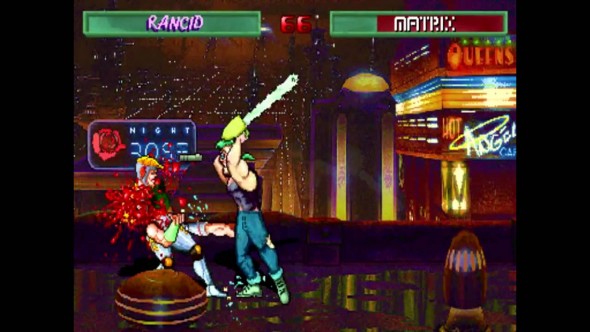
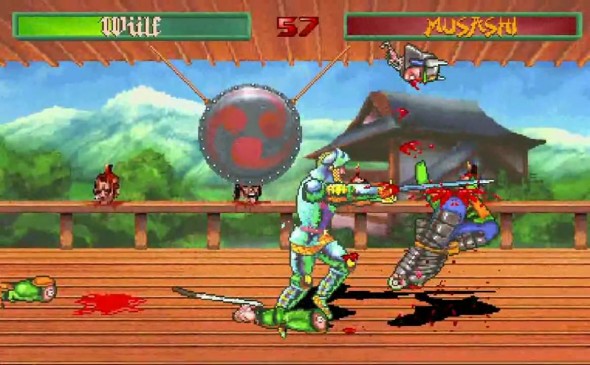
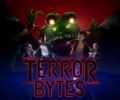
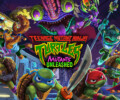
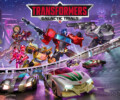

No Comments